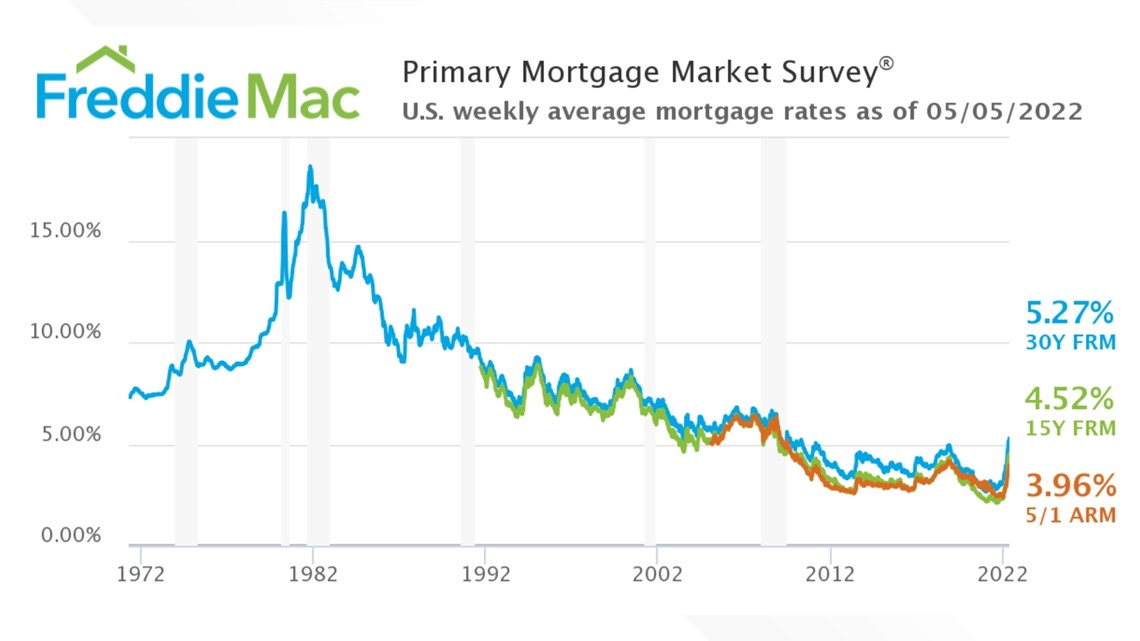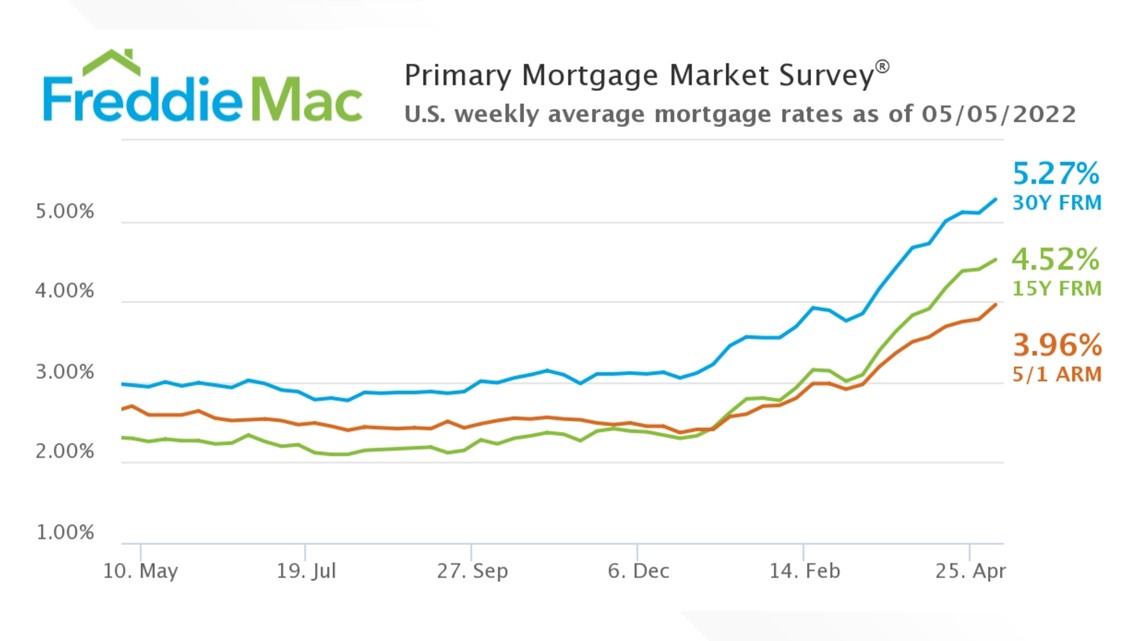On May 4, the Federal Reserve raised its benchmark interest rate by a half-percentage point in an attempt to combat the nation’s worst inflation in 40 years. It’s the Fed’s most aggressive move since 2000, the Associated Press reports.
On the same day, people claimed on social media that the 30-year mortgage rate in the U.S. had also risen to its highest level since 2009.
THE QUESTION
Is the 30-year mortgage rate the highest it’s been since 2009?
THE SOURCES
- Freddie Mac, mortgage company
- Bankrate, consumer financial services company
- Rocket Mortgage
THE ANSWER
Yes, the 30-year mortgage rate is the highest it’s been since 2009.
WHAT WE FOUND
It’s a common misconception that the Federal Reserve sets mortgage rates – but the agency does influence them, Rocket Mortgage explains on its website. If the Fed increases its interest rate, banks and lenders usually raise mortgage rates shortly afterward. On May 4, the Fed raised its benchmark rate to a range of 0.75 to 1%.
Data from mortgage company Freddie Mac and Bankrate show that the 30-year mortgage rate in the U.S. is currently at its highest level since 2009. This increase “marks an end of the historically low rates that characterized the period following the global financial crash of 2008 and 2009,” Bankrate says.
Freddie Mac reports that the 30-year rate averaged 5.27% for the week ending May 5, up from 5.10% during the previous week. Freddie Mac’s rates have historically trended slightly below those from Bankrate, which reports based on its national survey of large lenders that mortgage rates climbed to 5.38% from 5.22% during the previous week.
If you were to buy a home for $400,000 with a 10% down payment and a 3% interest rate, your monthly payment would be around $1,500, without factoring in homeowner’s insurance and property taxes. In the same scenario with a 5% interest rate, your mortgage would likely be more than $1,900 per month.
In 2009, Freddie Mac recorded the year’s highest averaged 30-year mortgage rate of 5.59% during the week ending June 11. The average 30-year mortgage rate for that year was 5.4%, according to Bankrate’s data.


This is also a marked increase from the 30-year rate recorded one year ago, with Bankrate reporting that it was 3.16% and Freddie Mac data also showing the rate hovering near 3%.


“Low interest rates were the medicine for economic recovery following the financial crisis, but it was a slow recovery so rates never went up very far,” Greg McBride, Bankrate’s chief financial analyst, said. “The rebound in the economy, and especially inflation, in the late pandemic stages has been very pronounced and we now have a backdrop of mortgage rates rising at the fastest pace in decades.”
Interest rates reached their highest point in history in 1981, rising above 18% at their peak, Freddie Mac data show. They steadily declined throughout the 1990s and early 2000s as inflation began to calm down, Rocket Mortgage reports.



